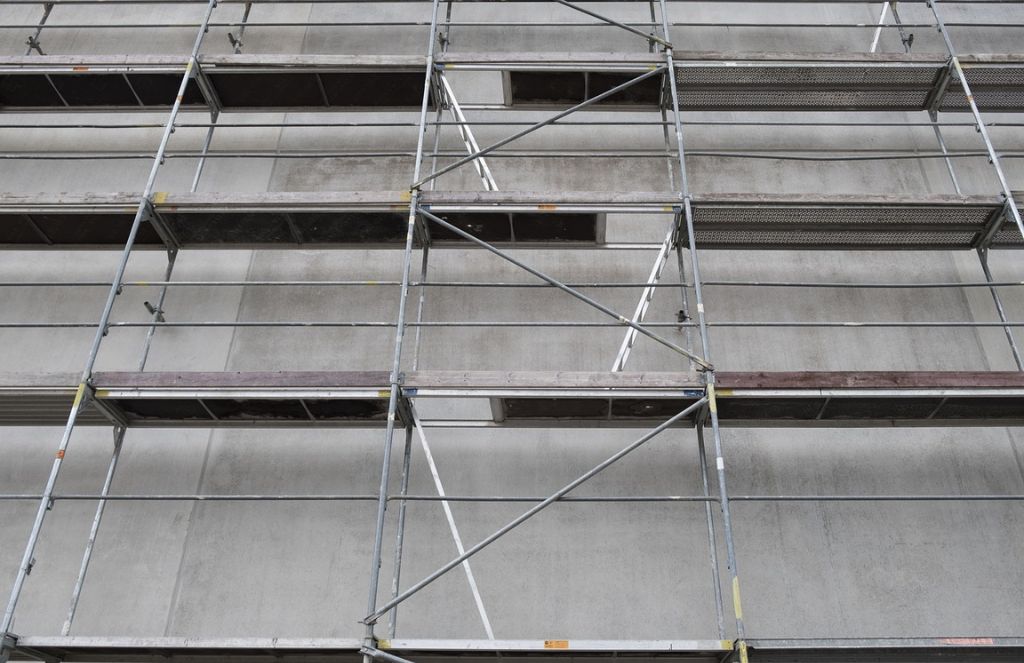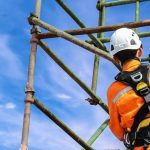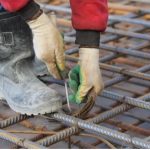Scaffolding, a temporary yet vital structure in construction projects, plays an important role in ensuring the safety and efficiency of work at heights. This blog delves into the essential guidelines for building scaffolding, focusing on stability and safety. The importance of these guidelines cannot be overstated, as they are fundamental to preventing accidents and ensuring a secure working environment. From selecting the right materials to understanding the intricacies of design and load capacity, each aspect of scaffolding construction demands careful consideration. Additionally, adhering to safety standards and regulations is not just a legal requirement but a moral imperative to protect workers and passersby. This comprehensive guide aims to equip readers with the knowledge and best practices necessary for building safe and stable scaffolding, thereby contributing to the overall success and safety of construction projects.
Basic Principles of Scaffolding Construction
Modular scaffolding, in its various forms, serves different purposes. From simple structures for small-scale projects to complex systems for high-rise buildings, the underlying principles remain constant: balance, weight distribution, and structural integrity.
| Balance and Stability | Weight Distribution | Structural Integrity |
| A well-balanced scaffold is key. It should distribute weight evenly to avoid tipping. This is achieved by a careful arrangement of the base, ensuring it’s level and secure. | Proper weight distribution is crucial. Each component of the scaffold, from the planks to the frames, must support the intended load without strain. | The strength of the scaffolding materials and their assembly determines the overall integrity of the structure. Regular checks and maintenance are vital to ensure ongoing stability. |
Material Selection for Scaffolding
Choosing the right material for scaffolding is a decision that impacts both safety and functionality.
- Steel and Aluminum: These are the most common materials. Steel is known for its strength and durability, making it ideal for heavy-duty work. Aluminum, being lighter, is easier to move and is perfect for projects requiring frequent repositioning of scaffolding.
- Factors Influencing Material Choice: The environment plays a significant role. In harsh weather conditions, materials that can withstand the elements are essential. Also, consider the weight of the materials for ease of transport and assembly.
Design Considerations for Scaffolding
Designing scaffolding involves more than just aesthetics; it’s about creating a structure that can safely bear the load it’s intended to support.
- Understanding Load Capacity: This is the maximum weight your scaffold can safely hold. It includes not just the weight of the workers but also their tools and materials.
- Designing for Conditions: Wind, weather, and weight are all factors that must be taken into account. The scaffold should be designed to withstand environmental stresses while providing a stable platform for workers.
Safety Standards and Regulations
Adhering to safety standards and regulations is not just a legal requirement; it’s a moral one. Ensuring compliance with these standards is essential for safeguarding the well-being of workers and minimizing the risk of accidents.
1. Local and International Safety Standards
Safety standards vary from one region to another, but they all share a common goal: to maintain a high level of safety in construction sites.
- Material Quality: Standards specify the quality and durability requirements for scaffold components. Choosing materials that meet or exceed these standards is crucial for the safety and reliability of your scaffolding.
- Load Capacity: Guidelines provide clear load capacity limits for scaffolding systems. This information helps in determining the appropriate configuration and support for scaffolds based on the anticipated loads.
- Erection and Dismantling Procedures: Safety standards often outline step-by-step procedures for assembling and dismantling scaffolding. Following these guidelines ensures that the scaffold is built correctly from the ground up.
2. OSHA Guidelines
In the United States, the Occupational Safety and Health Administration (OSHA) sets forth guidelines that are crucial for maintaining a safe working environment.
- Proper Assembly: OSHA outlines the correct procedures for assembling scaffolding, emphasizing the importance of secure connections, bracing, and planking.
- Regular Inspections: OSHA mandates that scaffolds be inspected by a competent person before each work shift and after any event that could affect their structural integrity. Regular inspections are essential for identifying and addressing potential hazards.
- Fall Protection: OSHA guidelines stress the importance of fall protection measures, such as guardrails and personal fall arrest systems, to prevent falls from heights.
Step-by-Step Guide to Scaffolding Assembly
Building scaffolding safely is a step-by-step process that demands attention to detail and precision. Following a systematic approach ensures that the scaffold is not only stable but also secure for workers to use.
Pre-Assembly Checks
Before commencing the assembly of scaffolding, it is imperative to carry out thorough pre-assembly checks:
- Inspect Components: Examine all scaffold components, including frames, braces, platforms, and safety equipment, for any signs of damage or wear. Any damaged parts should be replaced immediately.
- Gather Necessary Tools: Ensure that you have all the required tools and equipment readily available. This includes wrenches, hammers, planks, and safety gear.
Importance of Routine Inspections
Routine inspections are a fundamental aspect of scaffold safety. These inspections should be conducted regularly, with particular emphasis on:
- Daily Checks: Before each work shift, a designated competent person should inspect the scaffold for any signs of damage, wear, or potential hazards.
- Post-Alteration Inspections: After any modifications or alterations to the scaffold, a thorough inspection must be performed to ensure structural integrity is maintained.
- Extreme Weather Conditions: Adverse weather, such as strong winds or heavy rainfall, can impact scaffold stability. Inspect the scaffold after severe weather events to identify any damage or loosened components.
Checklist for Scaffolding Inspection
A comprehensive inspection should cover all critical aspects of the scaffold’s structure and safety features:
- Base: Examine the scaffold’s base and supports to ensure they are stable and securely anchored to the ground.
- Planks: Check the condition of planks to verify that they are free from cracks, splits, or other damage that could compromise worker safety.
- Guardrails and Toe Boards: Ensure that guardrails are in place on all open sides of the scaffold, and toe boards are securely fixed to prevent tools or materials from falling.
- Connections: Inspect all connections, fasteners, and locking mechanisms to confirm they are properly engaged and tightened.
- Stability: Assess the scaffold’s overall stability, looking for any signs of leaning, tilting, or shifting.
Training and Competency of Scaffolding Workers
The safety of scaffolding is not solely dependent on the equipment itself; it equally relies on the knowledge and competency of the workers who assemble, disassemble, and work on scaffolds.
Skilled and Trained Personnel
Employers must ensure that all individuals working on or around scaffolding possess the necessary skills and training to perform their tasks safely and efficiently:
- Assembling and Disassembling: Workers should be trained in the proper procedures for erecting and dismantling scaffolds, including the correct sequence of steps and safety precautions.
- Understanding Load Capacities: It is essential that workers comprehend the maximum load capacity of the scaffold they are using. Overloading a scaffold can lead to instability and accidents.
- Safe Movement: Workers should be aware of how to move on scaffolding safely. This includes proper climbing techniques, the use of access points, and the avoidance of sudden movements that could destabilize the structure.
- Emergency Procedures: All workers should be well-versed in emergency procedures, including how to respond to accidents, evacuate the scaffold, and summon assistance.
Training and Certification
Training programs and certification processes are instrumental in ensuring that scaffolding workers are adequately prepared for their responsibilities:
- Initial Training: New workers should undergo comprehensive training that covers scaffold assembly, safe work practices, hazard identification, and emergency response.
- Continuing Education: Regularly refresh workers’ knowledge through ongoing training sessions. This ensures that they remain up-to-date with safety protocols and industry best practices.
- Certification: Encourage workers to obtain relevant certifications, such as scaffold builder certifications, which validate their competence and dedication to safety. Having skilled and trained personnel not only reduces the risk of accidents but also contributes to the overall efficiency and productivity of construction projects.
FAQs
FAQs
Follow strong safety rules by using sturdy materials, setting the building scaffolding on flat ground, and balancing the weight across the frame. Add guardrails and toe boards to prevent tools from dropping. Train your team well and follow all local safety rules. It is essential to follow these steps to ensure the project moves forward smoothly.
Various parameters are associated when you choose the right type of building scaffolding. It includes the scaffolding project’s height, how much weight it must carry, and how often you need to move it. Choose steel for heavy tasks and aluminium for easier handling. Match your choice with weather conditions and safety needs. Always study your project closely and get advice from experts if needed.
Weak scaffolding can tip, break, or collapse, putting workers in danger. It often bends under weight, rusts fast, and may crack or shake. Faulty scaffolding fails safety checks and could violate regulations. Choose trusted, strong materials to prevent accidents and protect your team from serious injuries and costly mistakes.
Check your scaffolding every day before work starts and after storms or changes to the setup. Look for cracks, loose parts, or signs of wear. A trained worker must examine the entire scaffold and fix problems quickly. These checks help avoid accidents and keep the scaffold solid through every stage of the job.
Yes, you can reuse scaffolding when it stays strong and free from damage. Clean, store, and inspect it safely before the next project. Replace broken parts and keep every piece in good shape. Reusing scaffolding saves money and time, but only when you check that it still holds up safely.







